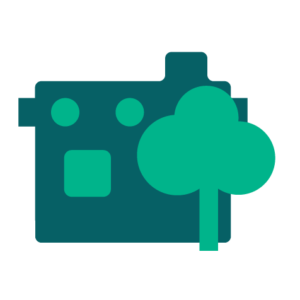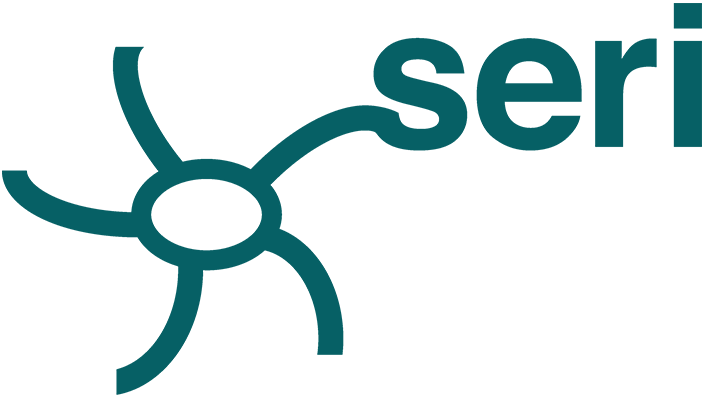
Healthy and Safe Homes
Evaluating the Long-Term Effectiveness of Healthy Homes Interventions
The study has two major interrelated objectives: (1) Determining the effectiveness and longevity of healthy homes interventions and education for reducing unintentional injuries and fires resulting from housing-related hazards; and (2) Determining the barriers and incentives affecting future use of these cost-effective strategies. The target population is the 2,985 low-income households that participated in SERI’s HUD OLHCHH Healthy Homes Production grant. Each household received a home visit that included a home assessment utilizing the SERI Heathy Homes Rating System app developed by SERI President Ann Marie Wolf, a report of the results, smoke alarms and an educational packet discussing methods to make their home healthier. Of these homes, over 1,000 also received construction interventions for unintentional injuries and fires. All homes were assessed and received interventions from 2011-2014, giving a minimum time of eight years between interventions and the follow-up assessment and survey proposed in this study. After all interventions were completed, SERI conducted a follow-up visit and a post-intervention home assessment with the SERI HHRS app. Data for all targeted homes include pre- and post-intervention scores for each of the 29 hazards assessed, detailed pre- and post-housing conditions and costs of interventions.
This study is critical because unintentional injuries and fires remain a significant problem in the United States resulting in thousands of deaths and millions of hospital emergency department visits each year at great cost to the economy. The gap in long-term evaluation of interventions must be addressed to improve the effectiveness of healthy homes programs. This three-year study will provide the first evaluation of long-term impacts from healthy homes interventions in low-income households.
Communities in southern Arizona face past, present and future environmental problems including pollution, water scarcity and rising temperatures. Limited-income and minority communities have the fewest resources to address these issues that affect their families and homes. To address these problems our healthy homes initiatives includes conducting home visits and helping improve families’ living environment. Our on-going healthy homes initiatives include but not limited to:
- Providing free smoke alarms and installations for the deaf and hard of hearing,
- Providing free smoke alarms and installations to prevent fire injuries,
- Reducing childhood lead poisoning by referring families to the City of Tucson Lead-Based Paint Hazard Control Program, and
- Providing grab bars and installations to help prevent injuries from falls.
Lead-Based Paint Hazard Control Program
HUD’s funding of the City of Tucson Housing and Community Development Department’s application for the Lead-Based Paint Hazard Control Program targets and serves low to very-low income families with children under six years of age— residing or frequenting owner occupied or rental housing built prior to 1978. Over a three-year period, the City, SERI and additional partners are using $2,9000,000 of HUD funding to directly assist an estimated 180 vulnerable households.
See if you qualify for the Lead-Based Paint Hazard Control Program here.
Children’s Health Program in Nogales
SERI’s Children’s Health program helped to improve the health of children in Nogales, Arizona. SERI staff evaluated the homes of participating families for health risks such as fall and trip hazards, and as a result the health and environment of families and the community are improved. All participating families received a packet of information and free installation of smoke alarms in their homes. We held community workshops to talk about the most common risks in homes; how to reduce these risks; and how to be more prepared for possible emergencies. We are also visited all the child care and health clinics in the area in order to share information.
Background
Residents of Nogales, Arizona in Santa Cruz County (SC) have limited resources to address their children’s environmental health, yet they face many health issues. According to the 2015 American Community Survey the population is 20,601 with 95% Hispanic. 32.7% of the population lives below the poverty level, including 48.4% of children under five. The City is designated as a Colonia, a lead poisoning high-risk area and an Arizona Medically Underserved Area. The NHEXAS U.S. Border 2012 Program found that 96% of households in SC had atrazine residues. SC had the highest childhood cancer incidence from 2001-2002 and 2010-2011 of any Arizona border county. Of those children screened in SC for lead from 2011-2015 over 30% had elevated blood lead levels. University of Arizona (UA) researchers recently found that asthma prevalence was higher in the Nogales, Arizona than Sonora. (“Prevalence of Asthma in School Children on the Arizona-Sonora Border”, Frontiers in Public Health, June 2017) Also of concern is that childcare facilities that care for four or fewer children do not need to be certified by the State and may not receive inspections. All of these data indicate the great need for the project. We are taking a comprehensive approach and will address multiple environmental health and safety hazards with a focus on lead including lead-based paint, pest infestations (integrated pest management), indoor air quality, hazardous chemicals, asthma and fire and safety hazards.
